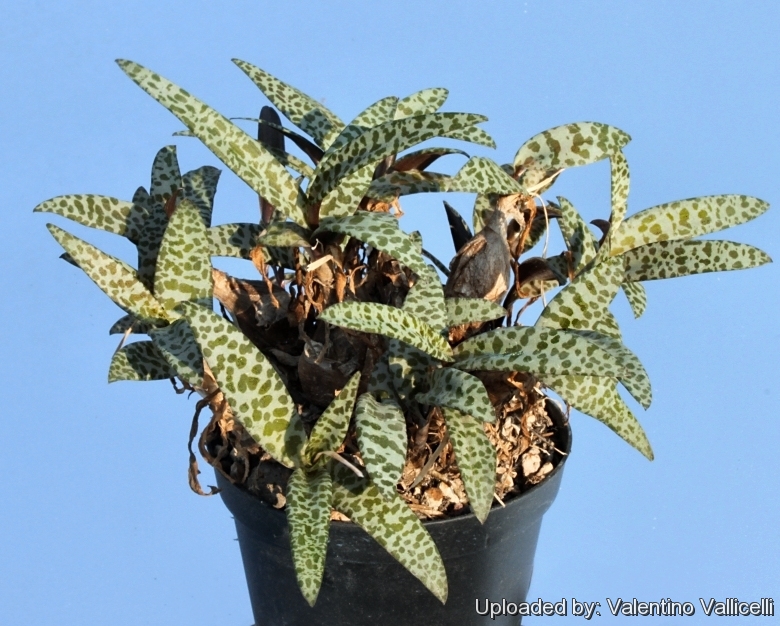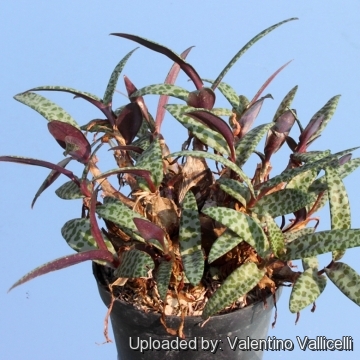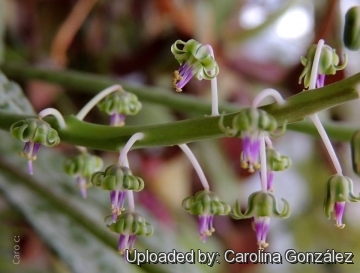
Ledebouria socialis Photo by: Valentino Vallicelli
(Silver Squill) is probably the most popular bulb among succulent collections, it has stunning spots on the leaves which make it beautiful and interesting to look at.
Whenever a plant lover comes across it, it always elicits a very favourable response.
Origin and Habitat: It is native to KwaZulu-Natal and Eastern Cape Province of South Africa.
Habitat: Grows in arid savanna in summer-rainfall regions, this species has mottled leaves enabling it to blend into its thicket backdrop.
Synonyms:
See all synonyms of Ledebouria socialis
back
Accepted name in llifle Database:Ledebouria socialis (Baker) JessopJ. S. African Bot. xxxvi. 253 (1970)Synonymy: 7
back
Common Names include:
ENGLISH: Violet Squill, Leopard Lily, South African Scilla, Bluebell, Silver Squill, Wood hyacinth
Description: The silver squill (Ledebouria socialis) is a small geophytic, evergreen bulbous member of the lily family that forms small, somewhat teardrop-shaped bulbs that sit on top of the soil in thick clusters. It survives drought as effectively as any succulent. The leaves are small, silvery white, shield-shaped and beautifully adorned with dark green dots. The small, green and purple flowers are borne in short, nodding racemes. It was first described by John Gilbert Baker as Scilla socialisSN|11611]]SN|11611]] in 1870. John Peter Jessop later revised the genus Scilla and split off several species, reclassifying Scilla socialisSN|11611]]SN|11611]] into the genus Ledebouria in 1970.
Bulb: Above-ground, conical, tapering , green to purple, clothed in peeling, papery tunics that prevent water loss, (15-)20-35(-40) cm tall 8-20 mm in diameter, it will soon cluster from the base to form dense mounds.
Roots: Succulent, 1 mm in diameter.
Leaves: 2 – 4, lance-shaped, strap-like, 4-7(-15) cm long and 1-2 cm wide, upright to spreading, fleshy, light silvery green, and basal with dark-green, turquoise, olive or aquamarine markings above and wine-red to purple beneath.
Flowers: Forms spreading-ascending racemes 9 - 17 cm long of bell-shaped flowers. Pedicels 6 mm long, bracts small, ovate. The flowers are tiny (about 3 mm) but showy, , campanulate, greenish purple-pink with a small pink stripe running down each petal, can be up to 20+ flowers on each spike. Filaments purple, exserted. Ovary globose, stipitate.
Blooming season: Spring and summer.
Bibliography: Major references and further lectures
1) Arnold, T. H. & B. C. De Wet, eds. "Plants of southern Africa: names and distribution." Mem. Bot. Surv. S. Africa no. 62. 1993.
2) Huxley, A., ed. "The new Royal Horticultural Society dictionary of gardening." 1992.
3) Zachos, E. "Tempting Tropicals: 175 Irresistible Indoor Plants." Portland, Oregon: Timber Press. 2005.
4) Urs Eggli “Illustrated Handbook of Succulent Plants: Monocotyledons” Springer Science & Business Media, 17 July 2001
5) Smith Prof. Gideon “Gardening with Succulents” Struik, 01 March 2006
 Ledebouria socialis Photo by: Valentino Vallicelli
Ledebouria socialis Photo by: Valentino Vallicelli Ledebouria socialis Photo by: Carolina González
Ledebouria socialis Photo by: Carolina GonzálezCultivation and Propagation: Ledebouria socialisSN|11610]]SN|11610]] is an easy-to-care plant. Bulbs at the base of the plant must be above the soil. The horticultural usefulness of Ledebouria socialisSN|11610]]SN|11610]] lies in the fact that it thrives in rich compost in shade and semi-shade, where many other plants will flounder. It is an excellent plant for the classroom or terrarium; flowers freely.
Soil: It prefers a well-drained but rich soil mix.
Exposure: It needs full sun to semi-shade, but adapts to shade too.
Waterings: Let it dry completely between waterings.
Fertilization: Feed monthly with 50% strength soluble house plant food when it is actively growing.
Hardiness: Hardy down to freezing so best kept in a frost free place indoors and can be grown outside where there is no danger of frost. It is very happy sitting in window sill too.
Propagation: Seeds or (usually) by division of bulb-clusters.












